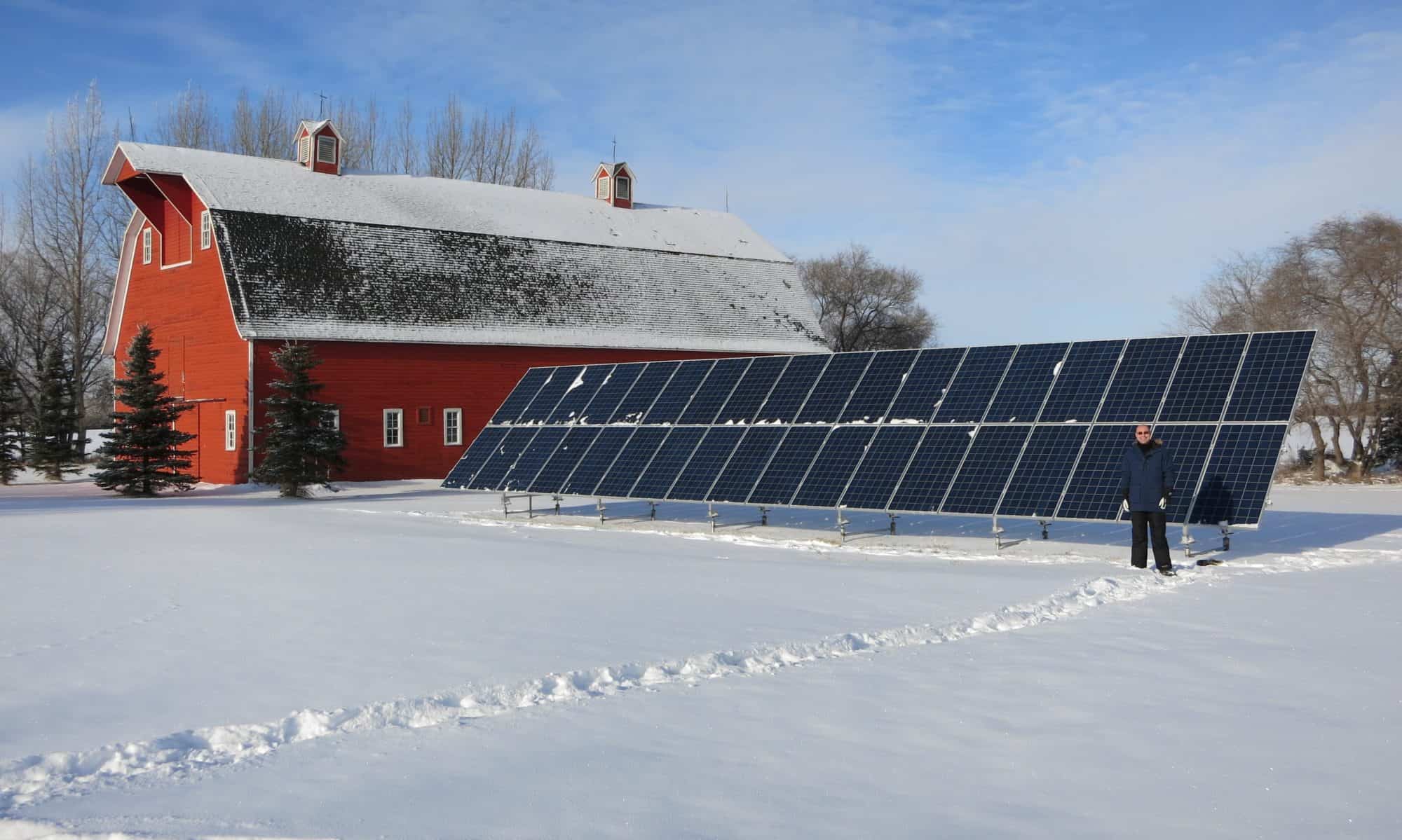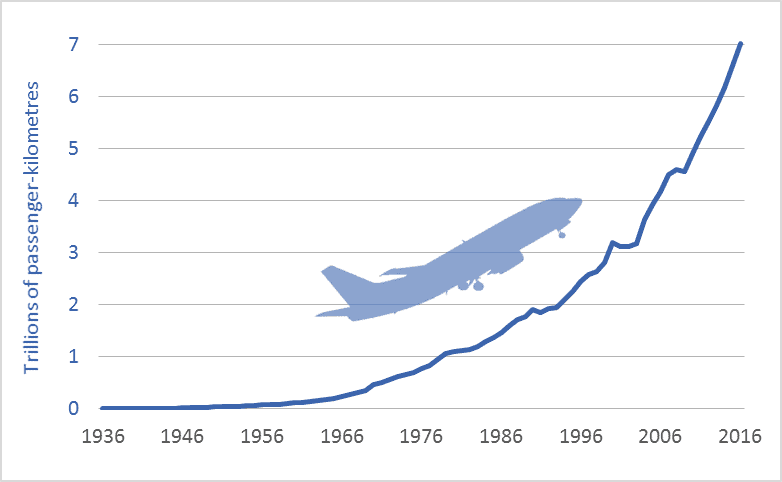The graph above shows that global air travel is increasing exponentially. In 2016, business travelers, tourists, and others traveled more than 7 trillion passenger-kilometres by air. As you might expect, a passenger-kilometre is equal to moving one person one kilometre. Therefore, if a plane carrying 100 people flies 1,000 kms that is equal to 100,000 passenger-kilometres (pkms).
The graph’s shape is significant; it reflects exponential growth: an ever-steeper upward curve. A system that grows exponentially doubles in a constant time-period. The amount of air travel we consume is doubling every 15 years. Thus, over the past 30 years, it has doubled twice, such that pkms were more than 4 times higher in 2016 than in 1986.
This exponential increase—this doubling and redoubling—is predicted to continue. Aircraft manufacturer Airbus projects that pkms will double again by 2030 and continue upward (Global Market Forecast 2016). Forecasts by airline industry group International Air Transport Association and Boeing similarly project a doubling in coming years.
This projected doubling by 2030 is significant and troubling. In the lead-up to the 2015 Paris climate talks, nearly every nation pledged to reduce greenhouse gas (GHG) emissions. Canada committed to reducing its emissions by 30 percent by 2030. The United States made a similar commitment: a 26 to 28 percent reduction by 2025. One could sum up the world’s commitments, roughly, by saying we have a global goal of reducing emissions by 30 percent by 2030. Over that same period, however, Boeing, Airbus, and the world’s airlines will be working to increase global air travel by 100 percent. Something has to give. If the world’s airplane manufacturers, airlines, resort destinations, and tourist industry succeed in redoubling air travel, the resulting GHG emissions will contribute to massively destabilizing Earth’s climate.
To meet our targets to cut GHG emissions by 30 percent in just 13 years, and by perhaps 50 percent or more by mid-century, we must ground most of the airplanes and replace them with trains powered by electricity generated from renewable, low-emission sources. If a traveler must cross the ocean, then perhaps that person should travel in a plane. But within the North American continent, within Europe, within Asia, and wherever oceans do not present a barrier, travel will have to be transferred over to fast trains. And because these trains can go from city-centre to city-centre, because trains can travel at hundreds of kms per hour, and because train journeys do not require the lengthy security checks common at airports, door-to-door travel times in trains can be less than those in planes.
Citizens and travelers face a choice: keep the planes flying, continue to increase the amount we fly, increase road travel similarly, miss our emission targets by a mile, and destroy our chances of a stable, prosperous future; or invest in high-speed rail, create local jobs, and create a twenty-first century transportation system that aligns with our emission-reduction and sustainability goals. We must ground most of the global airline fleet if we want to meet our emission-reduction goals. And we must build a new system of fast trains if we want to meet our travel and quality-of-life goals. Indeed, there is no reason that the factories and technologies currently in possession of aircraft makers Boeing, Airbus, Bombardier, Embraer, and other manufactures could not be repurposed to build those trains.
Graph sources: Airlines for America: Annual Results World Airlines

